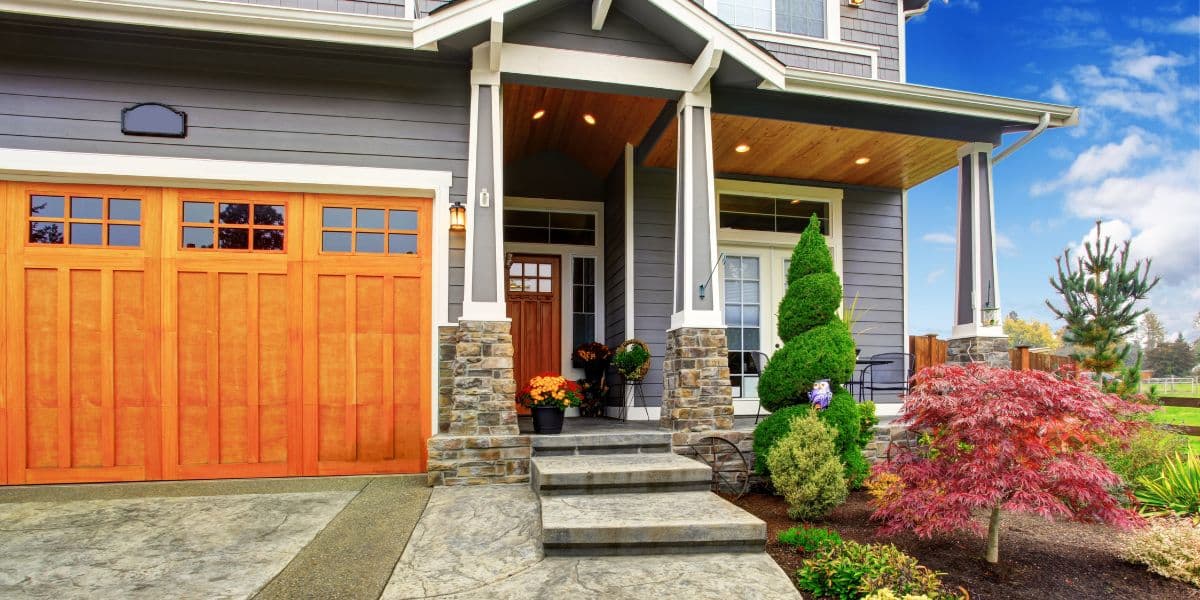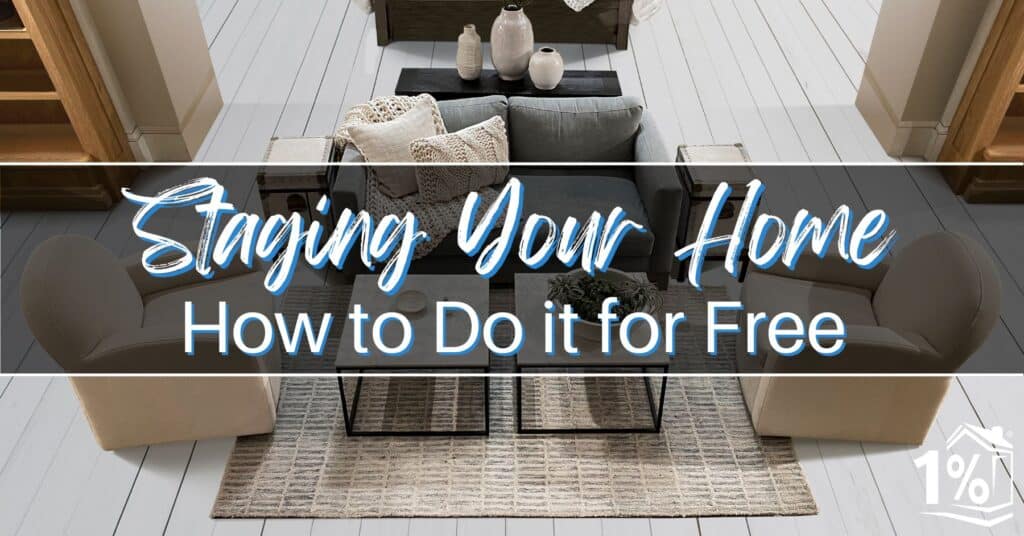How to Stage Your Home for Free
When it comes to selling your home, first impressions are everything. A well-staged home not only looks more appealing but can also help potential buyers envision themselves living there, ultimately speeding up the sale process.
But staging doesn’t have to be expensive or require hiring a professional. With a bit of creativity and effort, you can stage your home using what you already have—completely free of charge. In this blog, we’ll walk you through some practical, no-cost staging tips that will help you present your home in the best possible light.
1. Declutter and depersonalize
Clutter can make spaces feel cramped and overwhelming, which is the last thing you want potential buyers to experience. Start by removing excess items from countertops, shelves, and tables. Use baskets, boxes, or temporary storage solutions to keep things out of sight during showings.
But it’s not just about tidying up. Depersonalizing your home is equally important. Remove personal items such as family photos, unique artwork, and any décor that might reflect your personal taste. The goal is to create a neutral environment where buyers can imagine their own belongings in the space.
2. Deep clean every space
A clean home is a must when staging for sale. Cleanliness not only makes a space more inviting, but it also signals to buyers that the property has been well-maintained. Go beyond your regular cleaning routine and give your home a deep clean.
Focus on often-overlooked areas like baseboards, light fixtures, and the insides of appliances. A sparkling clean kitchen and bathroom can leave a lasting positive impression. Take the time to ensure every nook and cranny is spotless; a thoroughly cleaned home is one that buyers will remember. A home that looks dirty and unkempt can make it hard to justify your listing price.
3. Rearrange furniture for flow and space
How you arrange your furniture can significantly impact how spacious and inviting your home feels. Start by assessing each room and considering how the furniture placement affects the flow of movement. You want potential buyers to be able to move through each space effortlessly, without bumping into furniture or feeling confined.
If a room feels cramped, try removing unnecessary pieces of furniture to open it up. You can also experiment with different layouts to see what works best for creating a welcoming atmosphere. Arrange seating to encourage conversation, especially in living areas. In smaller rooms, consider using mirrors strategically to reflect light and give the illusion of more space. The goal is to create a balanced, harmonious flow that makes each room feel both functional and spacious.

4. Use lighting to your advantage
Lighting plays a crucial role in how a home is perceived. A well-lit home feels more open, airy, and inviting. The good news is that you can maximize your home’s lighting without spending any money.
Maximizing Natural Light: Start by taking full advantage of the natural light your home receives. Open up curtains and blinds to let in as much daylight as possible. If you have heavy drapes, consider removing them temporarily or tying them back to allow more light in. Clean the windows inside and out to ensure that they’re not obstructing any light.
Enhancing Artificial Lighting: For areas that lack natural light or during evening showings, make sure your artificial lighting is up to the task. Use lamps and overhead lights to brighten up dark spaces. If you have dim bulbs, replace them with brighter ones. If possible, use warm-toned bulbs to create a cozy, welcoming atmosphere.
5. Accessorize with what you already have
Staging doesn’t mean you need to buy new décor; in fact, you can effectively stage your home using items you already own. With a bit of creativity, you can repurpose and rearrange your existing accessories to create a fresh and appealing look.
Repurposing Items: Start by looking at what you have in different rooms. Throw blankets, pillows, and even plants can be moved around to give spaces a new feel. For example, you might bring a decorative vase from the living room into the dining room as a centerpiece. Rearrange books, candles, or other small items on shelves to create a more polished look.
DIY Décor Tips: Consider simple DIY projects to enhance your staging. For instance, gather fresh flowers or greenery from your garden to add a natural touch to your home. You can also create a simple centerpiece by arranging fruits in a bowl or stacking a few coffee table books.
Neutralizing Colors: When accessorizing, aim to keep things neutral to appeal to a broad range of buyers. If your décor is too bold or personalized, it might distract from the home itself. Swap out brightly colored or patterned items for more neutral tones like beige, gray, or soft blues and greens.
6. Highlight key features
Every home has its standout features—whether it’s a beautiful fireplace, a spacious kitchen, or stunning windows with a view. When staging your home, it’s important to highlight these features so that they become focal points for potential buyers.
Take a walk through your home and identify its best features. Once you’ve pinpointed them, think about how to draw attention to them. For example, if you have a fireplace, arrange furniture around it to make it a central gathering spot. If your home has large windows, make sure they’re clean and unobstructed to showcase the natural light and views they offer.
You don’t need to spend money to make these features stand out. Sometimes, it’s as simple as repositioning furniture or adding a few accent pieces to draw the eye. For instance, placing a vase of fresh flowers on a kitchen island can make the space feel more inviting. Similarly, a neatly arranged set of towels in the bathroom can elevate the space and make it feel more spa-like.

7. Enhance curb appeal
The outside of your home is the first thing potential buyers will see, so it’s important to make a great first impression. Enhancing your home’s curb appeal doesn’t have to cost a lot—in fact, there are plenty of no-cost improvements you can make to ensure your home looks inviting from the street.
A well-maintained exterior signals to buyers that the home has been cared for, setting a positive tone before they even step inside. Simple tasks like mowing the lawn, trimming bushes, and sweeping the driveway can make a big difference. If you have a front porch, make sure it’s clean and clutter-free, and consider arranging outdoor furniture in a way that feels welcoming.
Take a walk around your property and look for small, no-cost ways to spruce things up. Pull any weeds, clear away dead leaves, and tidy up garden beds. If you have any outdoor furniture, give it a quick clean and arrange it attractively. You can also use items you already have, like a doormat or potted plants, to add a touch of charm.
8. Virtual staging alternatives
In today’s digital age, many buyers start their home search online. Virtual staging can be an effective way to showcase your home’s potential, especially if you’re selling an empty property or one that’s hard to stage in person. While some virtual staging tools come with a cost, there are also free or low-cost alternatives that can help you achieve a similar effect.
Virtual staging involves adding furniture and décor to photos of your home using software. This can help buyers visualize how a space can be used and make it more appealing online. There are several free tools available that allow you to upload photos of your rooms and experiment with different layouts and styles.
The process is simple: take clear, high-quality photos of each room, then use virtual staging software to add in furniture and accessories. This can be especially useful for rooms that are currently empty or for spaces that are hard to envision, like an awkwardly shaped living room or a small bedroom. Virtual staging allows you to present your home in the best possible light, helping it stand out in online listings.
Conclusion
Staging your home is one way to save money when selling your home, and it doesn’t have to be expensive or complicated. By following these tips—decluttering, deep cleaning, rearranging furniture, maximizing lighting, repurposing accessories, highlighting key features, enhancing curb appeal, and exploring virtual staging options—you can create a welcoming and attractive environment that appeals to potential buyers without spending a dime.

